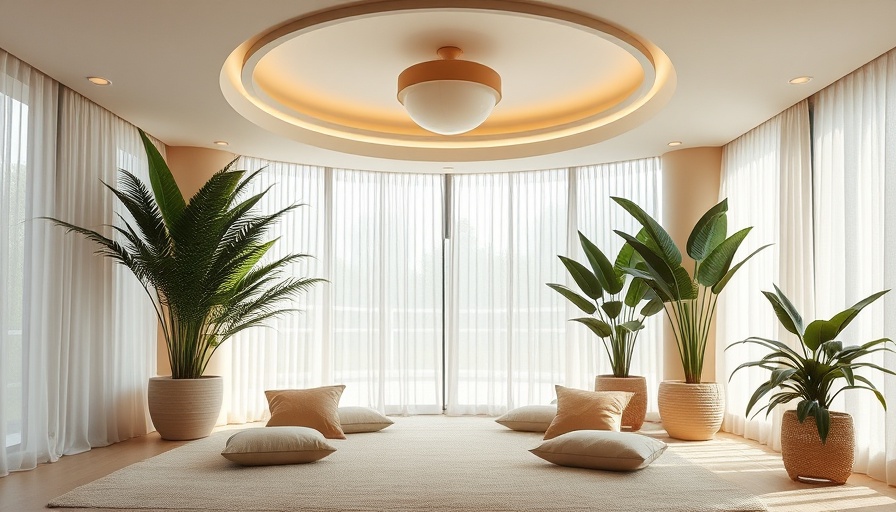
Reviving Spaces: The Essence of Biophilic Design
As urban environments burgeon and nature retreats, the concept of biophilic design emerges as a crucial element in reconnecting individuals with the natural world. Derived from the Greek words for life and love—“bios” and “philia”—biophilic design is not merely a decorative trend; it's a therapeutic approach that integrates natural elements into interior environments. It's about enhancing well-being and finding harmony between the spaces we inhabit and the nature we love.
Why Nature Matters
Psychological research outlines a deep-rooted human affinity for nature, emphasizing our innate need to connect with the environment around us. The principles of biophilic design tap into this intrinsic bond, showcasing the undeniable benefits that come from incorporating greenery and natural materials into our living and working spaces. Studies reveal that environments designed with biophilic elements can greatly reduce stress, enhance mental clarity, and boost overall mood—effectively working as a remedy to the chaos of modern life.
Benefits You Can Reap
Biophilic design promises an array of positive impacts:
- Improved Mental Health: Exposure to plants and natural light is proven to elevate mood, alleviate anxiety, and decrease instances of depression.
- Better Air Quality: Integrating living plants helps filter indoor air pollutants, ensuring a healthier environment.
- Increased Productivity: Natural lighting and connections to the outdoors have shown to enhance worker engagement and productivity, countering common fatigue in office settings.
- Healing Environments: In healthcare settings, views of nature are linked to faster recovery rates among patients.
Elevating Spaces: Practical Implementation
One of the most captivating aspects of biophilic design is its versatility. Incorporating elements like large windows that invite daylight, water features that promote tranquility, and indoor plants transforms spaces into serene oases. As emphasized by notable architects like Frank Lloyd Wright, the incorporation of nature within architectural design creates an experience that fosters peace and introspection.
Creating Tranquil Spaces
Biophilic design advocates for the use of materials that resonate with the essence of the outdoors. Natural elements, such as wooden textures, stone features, and calming colors found in nature, can be seamlessly integrated into any interior space. Such an approach not only boosts aesthetic appeal but also nurtures emotional well-being, allowing individuals to feel centered and relaxed.
A Step Towards Sustainability
Adopting biophilic design principles also aligns with sustainable practices. Choosing non-toxic materials and integrating energy-efficient features benefits both the environment and the health of inhabitants. Awareness of sustainability is growing; when coupled with biophilic design, it creates not just beautiful spaces but responsible ones.
Challenges and Counterarguments
Despite the overwhelming benefits, critics argue that simply adding plants or water features is insufficient. True biophilic design encompasses a holistic approach—considering how each component interacts within spaces to support well-being. Inappropriate implementation could result in disjointed and ineffective environments. Thus, engaging with professional designers to mindfully integrate biophilic elements is essential.
Future Predictions: Embracing Nature in Urban Living
The future of urban dwelling may see a rise in biophilic design applications, especially in light of the pandemic's push towards indoor comfort. As more people work and live in urban spaces, architects and designers must prioritize the essence of life with nature in mind. Innovations in technology paired with sustainable design can lead to enhanced living and working environments with abundant natural connectivity.
Call to Creativity: Begin Your Biophilic Journey
Incorporating biophilic design into your space is not an overwhelming task. Start small—add a few plants to your office, ensure ample natural light flows into your home, or create a cozy nook with natural materials. As you begin to reconnect your environment with nature, you'll likely notice the profound effects on your mental health and overall well-being.
 Add Row
Add Row  Add
Add 






Write A Comment